|
Music Is The Healing Force Of The Universe The Inconsistency of |
|
|
||||||||||||||||
|
News from 2013 - January to June January 1 2013 More Tributes A couple of Ayler tribute tracks should be noted: |
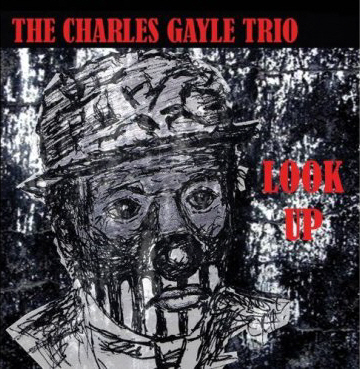 |
|||||||||||||||||||||||||||||||||||||
|
Look Up by the Charles Gayle Trio (ESP 4070) is a live session from 1994, featuring an 11 minute track, ‘’Homage to Albert Ayler’. Full details on the ESP site, samples on Allmusic, and an interesting review on Burning Ambulance. A later performance (from 2006), but an earlier release, of Gayle’s should also be mentioned. Live at the Glenn Miller Café, on Ayler Records, which contains a version of ‘Ghosts’. |
|||||||||||||||||||||||||||||||||||||
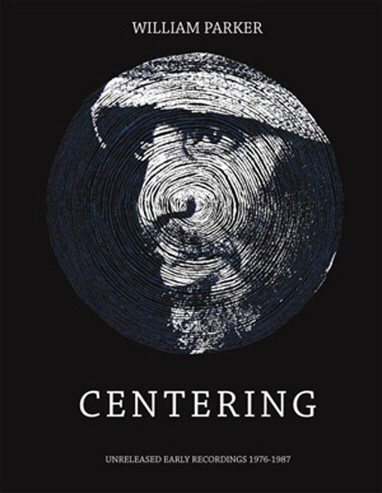 |
|||||||||||||||||||||||||||||||||||||
|
Centering - Unreleased Early Recordings 1976-1987 by William Parker is a 6 CD set (plus book) released by No Business Records, which includes (disc 2, track 2) ’One Day Understanding (Variation on a Theme by Albert Ayler)’, recorded by the Centering Dance Music Ensemble - David S. Ware (tenor sax); William Parker (bass); Denis Charles (drums) with Patricia Nicholson (dance) - on May 9th, 1980. Full details of the box set available here. * Astral Project Yair Dagan let me know about all the above (happy new year) and also sent me a link to the Perfection of Perplexion blog. The main reason for this is a few scanned pages from the Astral Project series of Japanese comics which reference Albert Ayler. I would have just added the link to the relevant part of the Bibliography but there’s also a bit about the Japanese film, Eureka (which includes ‘Ghosts’ on the soundtrack), as well as a trailer. And then, quite by chance, I found the relevant clip on youtube. * Lorrach/Paris 1966 delayed And thanks again to Marco Grossi, who let me know that he followed up on last month’s news about an early 2013 release of Lorrach/Paris 1966 by Hat Hut Records, and it’s now, unfortunately, been put back to the summer or autumn of the year. * Merry Ayler Christmas The idea of mingling Christmas carols with Ayler tunes (pioneered by Bernard Stepien’s ‘A Very Ayler Christmas’ project) seems to be spreading. Matt Wilson (whose brief is a little wider) is still performing ‘Angels We Have Heard On High’ mixed with Ayler’s ‘Angels’, according to this review of Matt Wilson’s Christmas Tree-O in the New York Times. And the Ayler tribute band, Witches & Devils is now on its third annual festive concert, previewed in the Chicago Reader, which also includes a sample from last year’s event. * Another Tribute - a bit delayed Again, found this by chance on youtube - ‘Fanfare for Albert’ by the One Music Trio, featuring David Panton on alto sax, Nick Stevens on bass and John Stevens on drums. Recorded in London on January 1st, 1981. No moving parts on the youtube video, which usually means I don’t bother putting it on the site, but, in this case, I used to know Dave Panton (back in the day when my hair was as long as his), so I thought I would. The track was originally issued on cassette but is now available on CD or as a download - full details from pantonmusic.com.
|
|||||||||||||||||||||||||||||||||||||
|
And finally . . . Last year’s News Pages have now been archived, but I didn’t want the video of Don Ayler singing to drift into the oblivion, so, here it is again:
|
|||||||||||||||||||||||||||||||||||||
|
February 1 2013 Ayler Chamber Music Online Last April I mentioned the music of Albert Ayler being treated to a makeover by a chamber music ensemble courtesy of a young Finnish composer, Kalle Autio. At the time I put an extract from a concert performance on the site and hoped that some enterprising record company would do these ‘classical’ arrangements of Ayler tunes justice and re-record them in a proper studio setting. No such luck. However, Kalle has now put the original recording on the bandcamp site and it is free to listen to or download: healing force - the albert ayler arrangements As I said back in April, I’m a sucker for string quartets, and I also enjoy all those experimental fusions of jazz and classical music going right back to Artie Shaw and Benny Goodman, so these arrangements of Ayler tunes were bound to appeal to me. If your taste doesn’t lean that way then you may wonder why I rate them so highly, but I do think these kind of experiments are useful in pushing Ayler’s music to new places, in the same way that he would have done if he’d lived. There’s a link to more of Kalle’s music, his ‘Dead Metal Trio’, on the bandcamp page. And if you like his paintings, there are more of them on the deviantART site. |
|||||||||||||||||||||||||||||||||||||
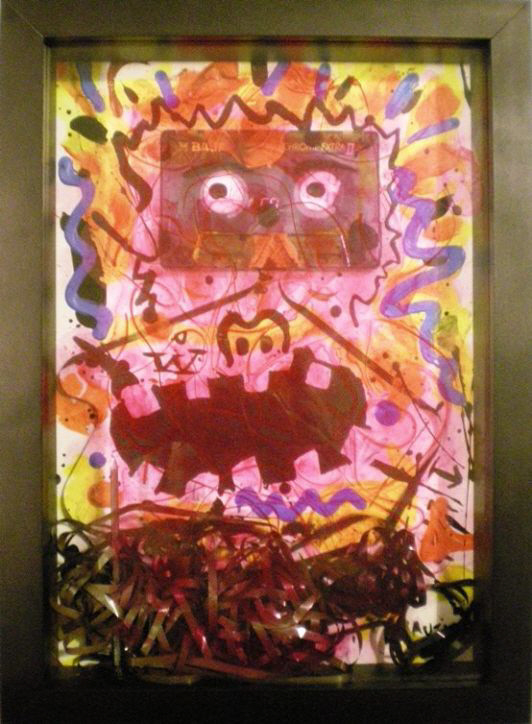 |
|||||||||||||||||||||||||||||||||||||
|
Lost Classics I’ve always had a soft spot for the early Ayler LP, My Name Is Albert Ayler, which tends to be overshadowed by his first American recordings, so it was nice to come across this piece on Soundblab by Rich Morris: Lost Classics: My Name Is Albert Ayler * The New York Art Quartet George Scala let me know about a new boxset of previously unreleased recordings by the New York Art Quartet. Produced by Triple Point Records, it’s a limited edition and you get 5 LPs and a book in a wooden box for $340. Although there’s no direct link between Ayler and the NYAQ, one could see New York Eye and Ear Control as a kind of free jazz supergroup, and there’s also that coincidence of them both acting as backing bands for Leroi Jones (Amiri Baraka) - Ayler on Sonny’s Time Now and the NYAQ on their first ESP album. The book is by Ben Young, who also compiled the brilliant one in the Holy Ghost box, and George kindly sent me a copy of this page, which gives an interesting comparison between Ayler and the NYAQ. * Michel Samson Interview Kees Hazevoet sent me this interview with Michel Samson from Jazz Bulletin 83 (June 2012). Unfortunately (for me at least) it’s in Dutch. If he ever has time, Kees says he will translate it, but until then I can look at the pictures. One thing Kees did say is included in the interview is the reason why Samson left the band in 1967 - “he got increasingly tired of listening to the ‘pseudo-religious, quasi-philosophical bullshit’ that Ayler constantly came up with.” * Ayler on the radio And staying with the Dutch, Yair Dagan sent me a link to Radio Free Amsterdam which has four archived programmes about Albert Ayler from 2010, one hosted by John SInclair, three by David Kunian. * ??? Yair also sent me this, and if we were running a competition to find the most obscure reference to Albert Ayler then this would take first prize. Over to Yair: “There once was an architecture magazine called Archigram. In issue no. 7 there was a letter from Warren Chalk: |
|||||||||||||||||||||||||||||||||||||
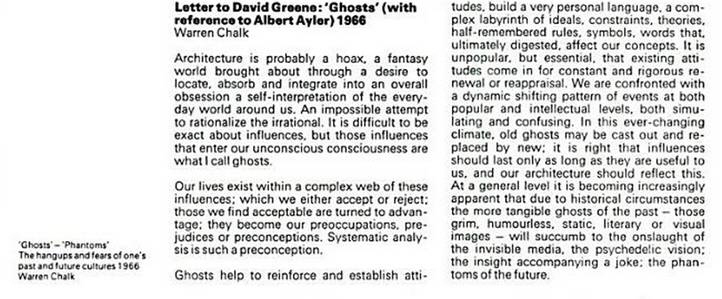 |
|||||||||||||||||||||||||||||||||||||
|
Archigram 7 was released as a series of loose printed sheets and an electronic resistor, distributed in a plastic bag. The issue was devoted to networks and the interchange of thought within the architecture community. ‘Phantoms’ is an illustrated essay by Warren Chalk, corresponding with a collage printed on the reverse titled ‘Ghosts.’ ‘Ghosts’ is devoted to past ideas in architecture, popular culture, and music; ‘Phantoms’ examines the present and the future. For some reason (sadly) he put a picture of Cannonball Adderley (from his record with Milt Jackson) and not AA: |
|||||||||||||||||||||||||||||||||||||
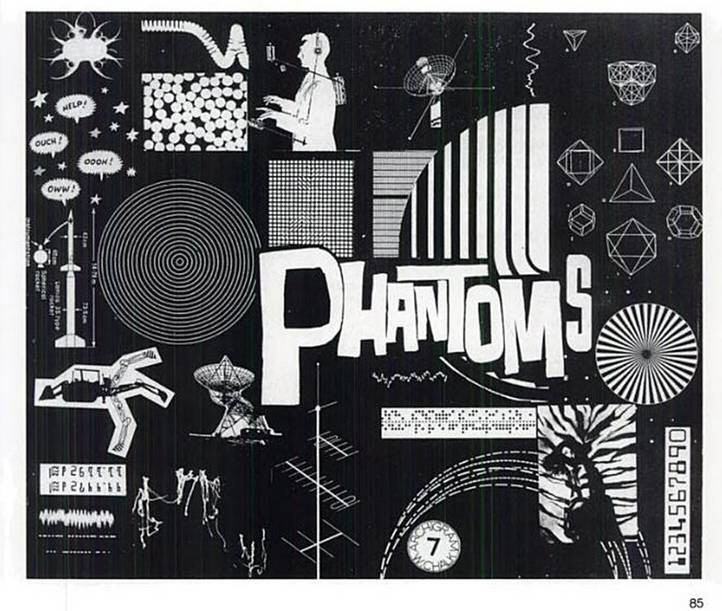 |
|||||||||||||||||||||||||||||||||||||
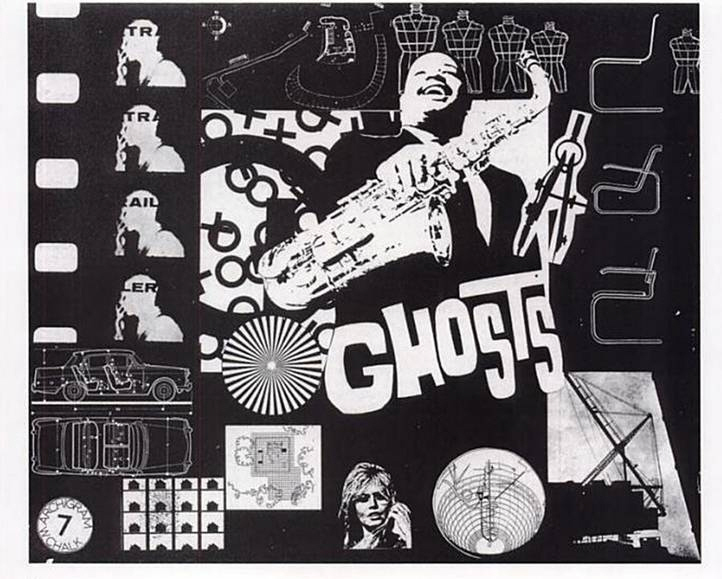 |
|||||||||||||||||||||||||||||||||||||
|
I found two essays by architects on Archigram. Both identified wrongly the player in the ‘ghosts’ collage as AA: Tucked into Archigram 7 among the pages of expected Archigram visuals - including several variations on the Plug-In concept and a dymaxion-style cutout puzzle - was a letter written by Warren Chalk to David Greene. Under the heading ‘"Ghosts" (by Albert Ayler)’, this contribution dealt directly with the pressures of influence that were brought to bear on the creation of the new language, both from within the discipline and from the cultural realm without. Chalk wrote to Greene: Architecture is probably a hoax, a fantasy world brought about through a desire to locate, absorb and integrate into an overall obsession a self-interpretation of the every-day world around us. An impossible attempt to rationalise the irrational. It is difficult to be exact about influences, but those influences that enter our unconscious consciousness are what I call ghosts. Our lives exist within a complex web of these influences which we either accept or reject; those we find acceptable are turned to advantage; they become our preoccupations, prejudices or preconceptions. To demonstrate how architecture served as a method to assimilate the everyday world, Chalk prepared an array of images as a supplement to the letter. On both sides of an inked sheet of paper (15 1/2 inches by 12 1/2 inches) white images emerged from a black background. The 'A' side was dedicated to the 'unconscious consciousness' of preconception. Surrounding a picture of Ayler with his saxophone hovering over the word 'GHOSTS', with an adjustable compass strategically placed off to the right, were the apparitions of modernism's variations on a framework. Included in the array were side elevations of tubular steel chairs by Marcel Breuer, the design for a Spherical Theater (1924) by Andreas Weininger, the plan of the 50 x 50 House (1950-1) by Mies van der Rohe, and a plan of Ronchamp (1955) by Le Corbusier. These choices were not necessarily paradigmatic items, but personal, more fanciful - an impossible theater for spectacle, an unbuilt prototype for mass housing by Mies, Le Corbusier's later work. Strewn among those were images from without, including a silhouette of a crane, a four-door sedan, outlines of tailor's mannequins, and a strip of film by Richard Smith and Robert Freeman featuring a man in profile. Chalk continued: Ghosts help reinforce and establish attitudes, build a very personal language, a complex labyrinth of ideals, constraints, theories, half-remembered rules, symbols, words that ultimately digested affect our concepts. It is unpopular, but essential, that existing attitudes come in for constant and rigorous renewal or reappraisal. We are confronted with a dynamic shifting pattern of events at both popular and intellectual levels, both stimulating and confusing. In this ever-changing climate, old ghosts may be cast out and replaced by new; it is right that influences should last only as long as they are useful to us, and our architecture should reflect this. At a general level it is becoming increasingly apparent that due to historical circumstances the more tangible ghosts of the past - those grim, humourless, static, literary or visual images - will succumb to the onslaught of the invisible media; the psychedelic vision; the insight accompanying a joke; the phantoms of the future. Accordingly, the static things that linger and preoccupy must be allowed to interact with the newer dynamic conditions, and even to be overtaken by them. The capacity for architecture to adapt to the ever-changing climate directly correlated with the capacity for its language to incorporate the range of ever-changing influences from outside. The 'B' side, 'Phantoms', to which the 'Ghosts' will succumb, was comprised of no works of architecture as such. Included were the specters of triangulated geometries, Op Art patterns, a model on a leopard print, diagrams of fleeting impulses, and a schema of a rocket with hovering spiky, comic-style speech bubbles. Whether an aerial, a telephone cord, a satellite dish or a strip of punched code, all forms of electronics-age cultural production were architecturally suggestive. Architecture as a vehicle of communications dramatically increased the reliance of the discipline on the visual domain outside of modern graphic strategies. Images of consumer culture were drawn upon to generate the atmosphere of transience and circulation, or even equate lifestyle and architecture. Architecture as a web of imagery implied that building was not of the essence after all. Representation was architecture in itself. Sadler writes: Warren Chalk, Ghosts, Archigram no.7, December 1966: Chalk reveals the images cinematically turning over in his mind as he contemplates a trajectory for architecture, and buildings do not predominate. Le Corbusier’s Ronchamp chapel and Mies van der Rohe’s Fifty-by-Fifty House project of 1950 are reproduced no bigger than some Bauhaus chairs, a radio telescope, a rotoscope, a car, and Brigitte Bardot. Presiding over the ensemble is radical jazz saxophonist Albert Ayler.’ * And after all that - this From Noise Park. (Thanks again to Yair, all is forgiven.) |
|||||||||||||||||||||||||||||||||||||
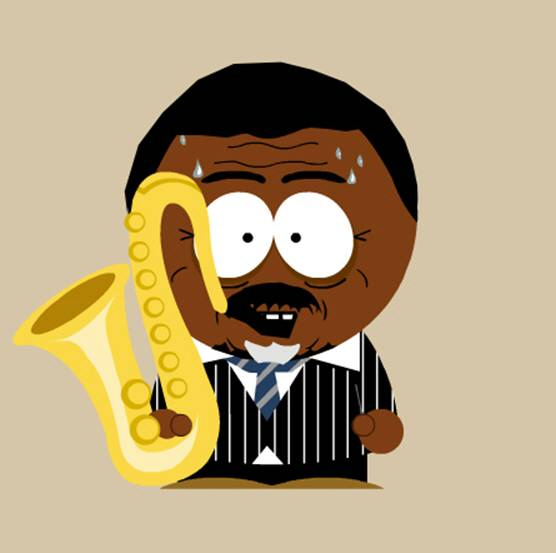 |
|||||||||||||||||||||||||||||||||||||
|
March 1 2013 Ayler at the Whitney- sort of Visitors to New York’s Whitney Museum of American Art are currently being regaled by the sound of Ayler’s ‘Spirits Rejoice’. As part of the exhibition, Blues for Smoke, (February 7 - April 28), Stan Douglas’s 1992 video installation, Hors-champs is being shown in the Whitney’s Lobby Gallery. The video features four musicians, Douglas Ewart (ts), George Lewis (tb), Kent Carter (b) and Oliver Johnson (d) playing Ayler’s tune. |
|||||||||||||||||||||||||||||||||||||
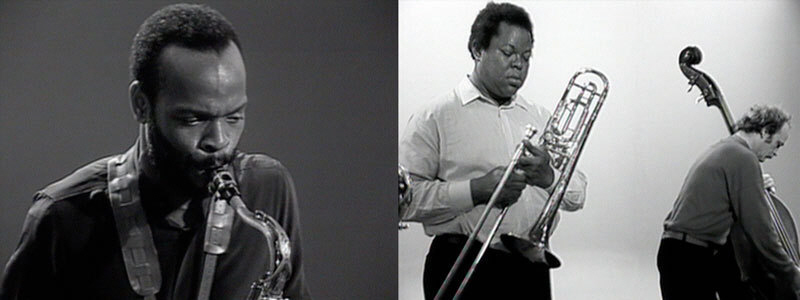 |
|||||||||||||||||||||||||||||||||||||
|
The following description of the piece is taken from the Whitney site: “Hors-champs, a two-channel video installation by Vancouver-based artist Stan Douglas, presents a jazz performance staged and recorded in a Paris television studio. The title of Douglas’s video installation borrows from the language of film. Translated from the French as “out of field,” or more colloquially “off-camera,” the term “hors-champs” refers to the capacity of certain images to create a sense of narrative space beyond what is immediately shown by the camera. More information about Hors-Champs (including a brief video clip) is available on the New Media Encyclopedia site. And thanks to Dikko Faust for letting me know about all this. * Cleveland’s Top 100 Celebrities Richard Koloda sent me this link to cleveland.com with a list of The Plain Dealer’s top 100 celebrities - Albert Ayler came in at Number 71 (one behind Guy Lombardo). The full list is available here - Paul Newman came top. |
|||||||||||||||||||||||||||||||||||||
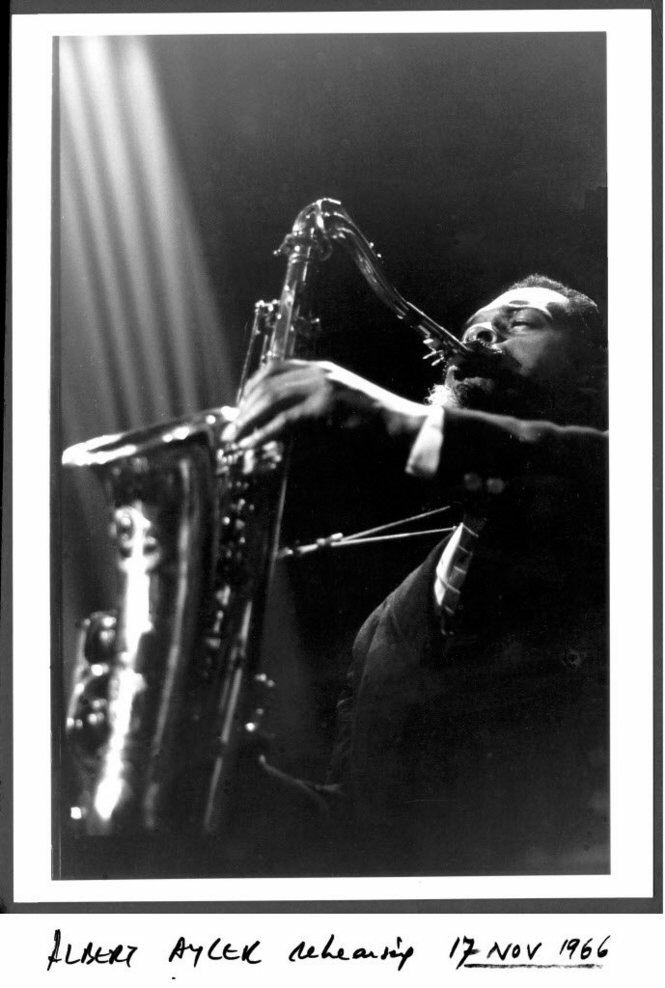 |
|||||||||||||||||||||||||||||||||||||
|
April 1 2013 Jan Persson Photos Seven of Jan Persson’s photos of Albert Ayler were previously available on the Photographers Direct site. All were taken in Denmark in 1962: three from the Jazzhouse Montmartre, four from the TV broadcast with Cecil Taylor. On Jan Persson’s site, seven more photos have been added from the Copenhagen concert of the 1966 European tour, which took place on 11th November. This concert remains unreleased, but is available on this site. |
|||||||||||||||||||||||||||||||||||||
 |
|||||||||||||||||||||||||||||||||||||
|
[Albert in a woolly jumper in 1962 - very Sarah Lund.] * Jazz Forum Last year Pierre Crépon let me know about the online archive of the Polish magazine, Jazz Forum. I always meant to go back and do another search for Ayler items, but, of course, never got round to it, and now Yair Dagan (who also sent me the link for the above item) has sent a couple: a review of the Fontana reissue of My Name Is Albert Ayler and Val Wilmer’s review of the Baden- Baden Free Jazz Meeting on the 7th December 1970, which occurred only a couple of weeks after Albert’s death. John Stevens’ tribute is available on this site and I’ve placed the review there. It includes the following: |
|||||||||||||||||||||||||||||||||||||
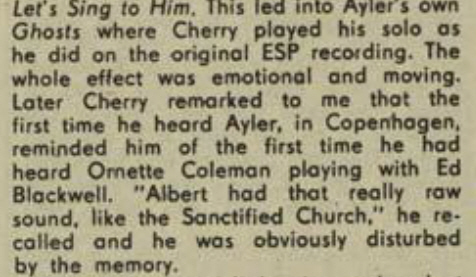 |
|||||||||||||||||||||||||||||||||||||
|
Milford Graves, Noah Howard and Muhammad Ali And Pierre Crépon wrote to fill in some pieces of the Ayler discographical jigsaw: First, the Milford Graves interview from WKCR’s ‘Albert Ayler Birthday Broadcast’ of 13th July, 1987, includes a section on the appearance of the Ayler group at the Buffalo Festival of the Arts on 9th March, 1968. This was the concert filmed for a TV programme about the festival, which we spent some time on last year trying to track down, or at least trying to ascertain whether the Ayler segment was ever shown. Time we would have saved if we’d remembered this interview with Graves, since he confirms the concert was filmed, but was not included in the programme. Pierre also reckons that the unknown alto player on the Pharoah Sanders’ track in the Holy Ghost box, is Noah Howard. He explains: “I think the unknown alto sax player who is credited on the 1968 track with Ayler and Pharoah Sanders on disc 6 of the Revenant set is probably Noah Howard. I came across an interview with Howard, Frank Wright and Bobby Few in “Jazz Hot” (January 1970) which opens with short discographies of the musicians. Howard’s includes an “Albert Ayler (Jihad)” item. In all likelihood (given the extremely limited documentation available about them at the time), it must have been the musicians themselves who provided the info for their discographies to the writer. Baraka says in the Revenant book (48-49) that the track on disc 6 was recorded for another Jihad LP, so it seems likely to me that it was this session Howard was refering to when he told the writer about a Jihad LP with Ayler.” Pierre sent me a copy of the discography, which also seems to suggest that Muhammad Ali was the drummer on Don Ayler’s unreleased session for Amiri Baraka’s Jihad label. |
|||||||||||||||||||||||||||||||||||||
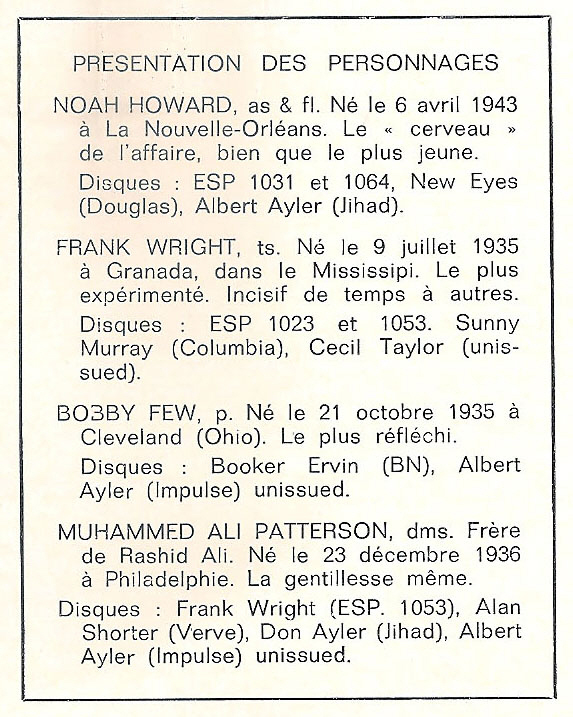 |
|||||||||||||||||||||||||||||||||||||
|
Rebel With The Wrong Cause Staying in France, I think I have to apologise over this one. Back in 2011 Yair Dagan sent me a link to an article about Ayler by Jedediah Sklower ‘Rebel with the wrong cause. Albert Ayler et la signification du free jazz en France (1959-1971)’, published in Volume! La revue des musiques populaires (France: No. 6 (1&2), 2008, p. 193-219). Unfortunately, I couldn’t get the link to work on my PC (which is on its last legs) so I just added the information to the Ayler Bibliography and, as far as I can tell, never mentioned it on the What’s New page. Now, Yair has sent me another link, which does work, so, if you can manage the French, you can give it a go. Yair also sent a link to another article, which only mentions Ayler in passing, but which is concerned with the political background to the free jazz movement of the 1960s: ‘The Challenge of the Changing Same: The Jazz Avant-garde of the 1960s, the Black Aesthetic, and the Black Arts Movement’ by Jason Robinson (University of California, San Diego). * The Ayler Influence Part of the monthly ritual is checking certain sites for Ayler-related activity, one of which is Google News, which threw up the following: Interview with Dan Friel from The Fader: “Your music is noisy but also extremely accessible and melodic and catchy. Do you like to think of pop and noise as compatible? I do. I think of a lot of examples pretty frequently, but I did an interview a couple of months ago—[the journalist's] name was Clifford Allen, and he brought up an Albert Ayler quote that I wasn’t familiar with about how he wanted to write melodies that people could hum. Hearing Ayler when I was a teen was huge for me because I was getting into aggressive and abstract music and here was this guy who was just unflinching about putting simple, beautiful melodies right in the center of it. I’ve been thinking a lot about “I want to make melodies that people can hum.” It’s not off-limits. If anything I feel something that feels right, that’s why I do it more than anything. Also, just working purely with abstract sounds sometimes feels like I’m not adding something to the mix that hasn’t been done a lot already—like I’m not really adding anything to the game, to the world, to the collective. Interview with Juju and Jordash from The Quietus: “I got into free jazz maybe a year or two later when a friend of my dad’s gave me an Albert Ayler CD, because he thought it was broken,” he laughs. “It was the weirdest thing I’d heard up to that point and I thought it was really cool. I didn’t understand what was going on, but I knew it was interesting. And then I started to explore this kind of style as well.” * And finally . . . Given the date, I thought I should also mention this, even though it is seven years old. |
|||||||||||||||||||||||||||||||||||||
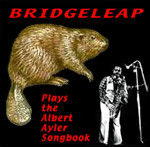 |
|||||||||||||||||||||||||||||||||||||
|
May 1 2013 Spin’s Alternate 60s List Albert Ayler’s Spiritual Unity comes in at No. 19 on Spin magazine’s Top 100 Alternative Albums of the 1960s list. The Velvet Undergound’s White Light/White Heat gets the top spot, but as far as Free Jazz is concerned, Ayler comes third, only beaten by Ornette Coleman’s Free Jazz at 7 and Sun Ra’s Heliocentric Worlds at 9. The comment on Spiritual Unity runs thus: “At least Coltrane and his post-bop jazz peers were given the benefit of pulling a Picasso after they tired of playing it straight. Albert Ayler’s roots were in R&B, meaning charges of charlatanism dominated the critical discourse around him. The reactionaries had a point, for Ayler sounded like no other horn player, rarely explaining his methods and encouraging listeners to focus on ‘feelings’ rather than ‘notes.’ The second release from the only label in town willing to cut him a check found Ayler’s unsettling tenor sax screaming atop a rhythm section so unmoored from traditional meter that casual listeners heard only chaos. Yet Gary Peacock and Sunny Murray knew how to keep time as surely as Ayler himself loved a good melody why else would the maestro cover his best tune (‘Ghosts’) twice on a four-cut album? Soon, the quartet would expand into an ensemble, quoting brass bands and Irish jigs. But here Ayler speaks in tongues the way few of his rivals ever dared.” The list is a nice eclectic mix (Françoise Hardy?!?) and for us owd ’uns, points us in the direction of things we may have missed while bathing us in a warm glow of nostalgia (Françoise Hardy). * Amiri Baraka and Henry Grimes in Scotland Sorry, missed this last month, but thought I should mention it now. Two major figures in the Ayler story appeared together in Scotland last month as part of a series of events organised by Arika under the title ‘Freedom is a Constant Struggle’. The Tramway, Glasgow was the venue for one event featuring Amiri Baraka on Saturday 20th April, then on the Sunday he joined forces with Henry Grimes for “a dialogical meeting of Baraka’s radical poetry and Grimes’ free jazz syncopation.” There’s an interview with Baraka at the Scottish Herald, information about the concert on the Arika site, and here’s a photo: |
|||||||||||||||||||||||||||||||||||||
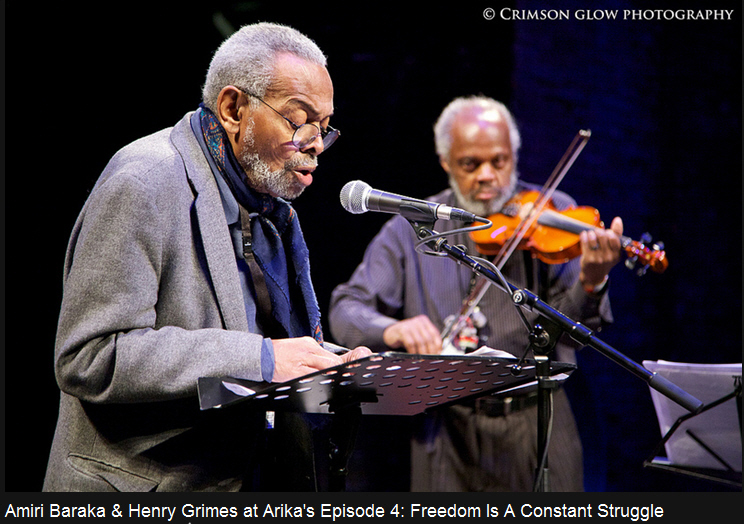 |
|||||||||||||||||||||||||||||||||||||
|
Guy Villerd No such mistakes from Yair Dagan, who’s sent this information about an Ayler-related event, way in advance. Guy Villerd’s Ayler Quartet is touring Europe in October, 2013. More information about Guy’s Ayler tribute band on the Arfi site and a couple of earlier items: an interview from 2004 (in French) and a piece from the 2006 Vilnius Jazz Festival. |
|||||||||||||||||||||||||||||||||||||
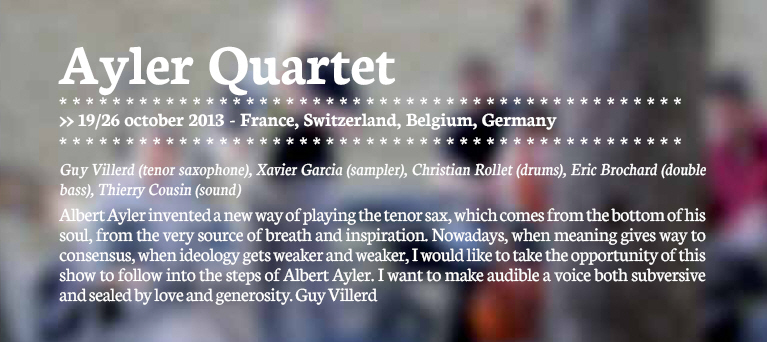 |
|||||||||||||||||||||||||||||||||||||
|
David Murray and Albert Ayler Yair also came across this interesting series of blogposts from 2007 about the supposed influence of Albert Ayler on David Murray. There are three articles in total (here’s the link to the third from which the earlier ones can be accessed) and the main thrust of the argument seems to be that there is no connection beyond Murray writing his oft-recorded tune, ‘Flowers For Albert’. In the second post there’s this quote from a 2005 BBC interview with Murray about the origins of the piece: “To tell you the truth it wasn’t really a big deal. I think they made more of a big deal about it than it really was. (er..) Basically I visited Sunny Murray’s house and he was telling me about how Albert had gotten killed and why he was dead, and all the ramifications of that. (er..) I just thought it was sad and I was walking home from his house and I started whistling this song and I went home and wrote it down; and that was pretty much it. And then after that everybody was telling me that I was an Albert Ayler clone and I worshipped Albert Ayler and Ayler this and that. I’d never even met Albert Ayler. I didn’t really know anything about him until Sunny Murray told me something about his life.” And in the third post there’s this: “Ayler was influential in making me wary of the dangers that can befall a jazz musician. After all, his body was found floating in the river. That’s what I was thinking of when I wrote ‘Flowers for Albert’, but everyone heard the tune and all of a sudden decided I sounded just like Albert Ayler. But I never turned Albert’s solos back to 16 RPM so I could transcribe them and play them note-for-note the way I did with Paul [Gonsalves]’s 27 choruses on Duke’s Diminuendo and Crescendo in Blue’ or Coleman Hawkins’s ‘Body and Soul’, or lots of other things.” Interesting stuff, which confirms my own opinion - I could never see (hear) the supposed connection between them. * And a couple of CDs Yair also sent details of a couple of CDs - one containing an Ayler tribute, the other an Ayler track - which I’d usually just add to the relevant pages of the site. However, the first is of more than passing interest since it’s a recording by the Russian duo of Alexey Kruglov and Vladimir Tarasov. The CD is called Dialogos and there’s a five-minjute track called ‘Dialog about Albert Ayler’ (full details and a short sample on the allmusic site). What’s interesting is that Vladimir Tarasov was a member of the Ganelin Trio, and, buried deep in the archives, there’s a photo of him with Don Ayler, taken in Florence in July, 1981. |
|||||||||||||||||||||||||||||||||||||
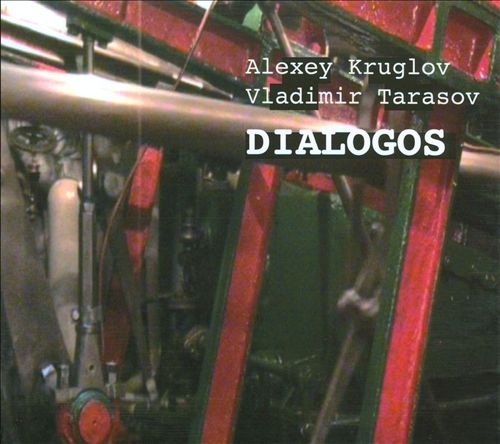 |
|||||||||||||||||||||||||||||||||||||
|
And the second, is a compilation on Jazzman Records entitled Spiritual Jazz 4: Americans in Europe, which includes ‘Summertime’ from My Name Is Albert Ayler, together with tracks by Eric Dolphy, Sun Ra, Don Cherry, Lee Konitz &c. All of which you can listen to on the Jazzman site. |
|||||||||||||||||||||||||||||||||||||
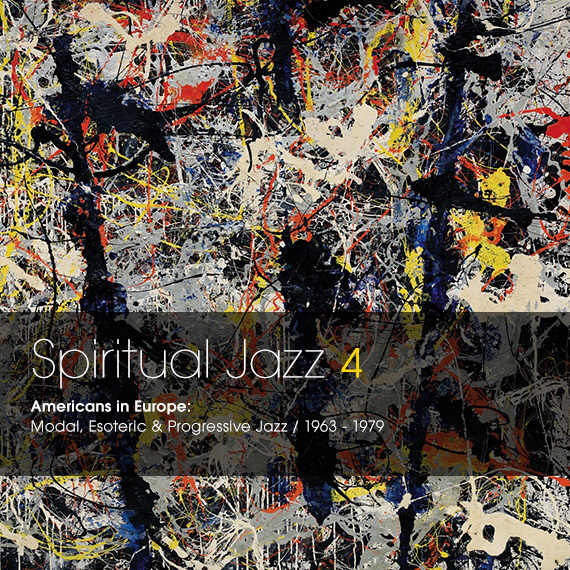 |
|||||||||||||||||||||||||||||||||||||
|
June 1 2013 Sune Spangberg on The First Recordings Yair Dagan came across the following via google books - it’s an extract from Alf Gabrielsson’s Strong Experiences with Music: Music is Much More Than Just Music (Oxford University Press, 2011, pp. 234-235). Although the contributors are anonymous (this is attributed to “Man, old, 1960s”) this is obviously Sune Spangberg, drummer on The First Recordings (and “T. H.” is the bassist, Torbjorn Hultcrantz). |
|||||||||||||||||||||||||||||||||||||
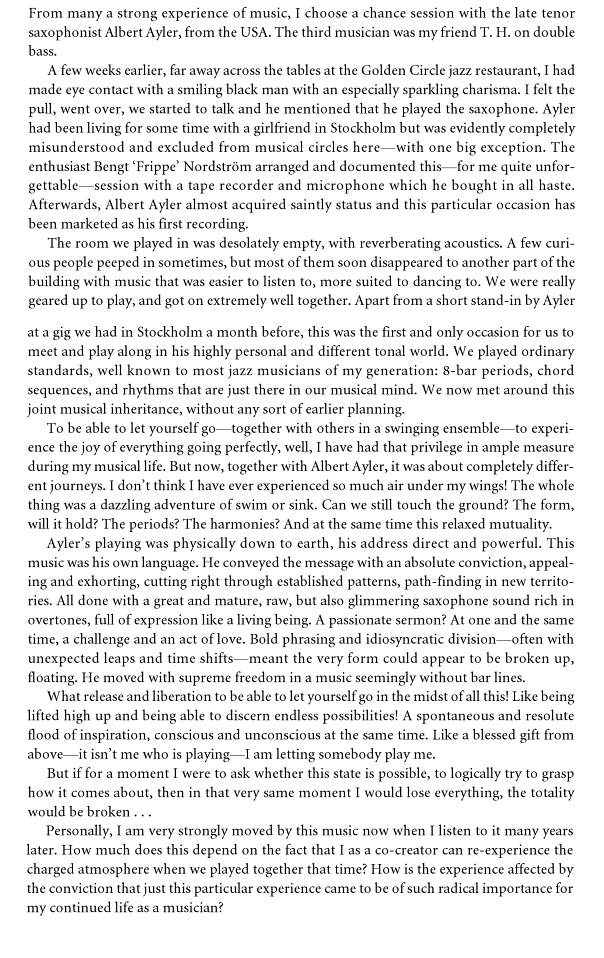 |
|||||||||||||||||||||||||||||||||||||
|
Jacksonville Jazz Festival First off, apologies for missing this last month. On May 26th, as part of the annual Jacksonville Jazz Festival in Florida, there was a special Albert Ayler event. |
|||||||||||||||||||||||||||||||||||||
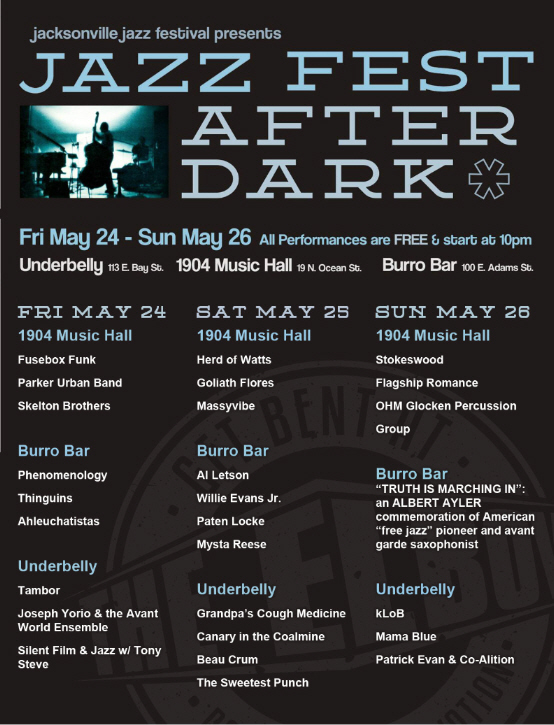 |
|||||||||||||||||||||||||||||||||||||
|
Organised by Jamison Williams of the EAUF (Experimental Arts Union of Florida), it featured performances by The Albert Ayler Apparitions Quartet (with Dan Kozak on saxes) and a Spiritual Unity Suite by Jim Ivy. |
|||||||||||||||||||||||||||||||||||||
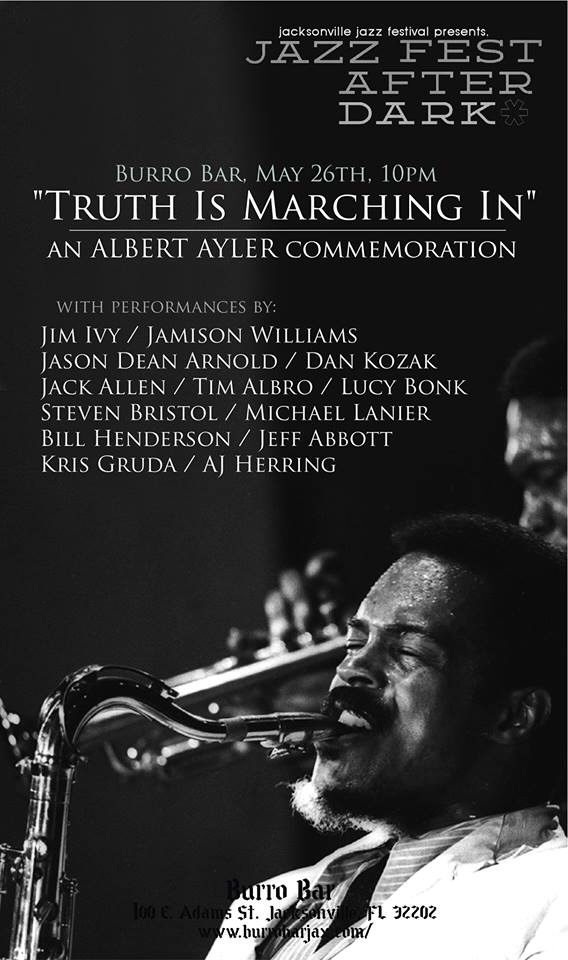 |
|||||||||||||||||||||||||||||||||||||
|
The concert was recorded and is available to listen to or download on the Bandcamp site. There’s more information about the event on Jamison Williams’ facebook page, including photos by Anna Funk (I particularly liked this one of Dan Kozak). |
|||||||||||||||||||||||||||||||||||||
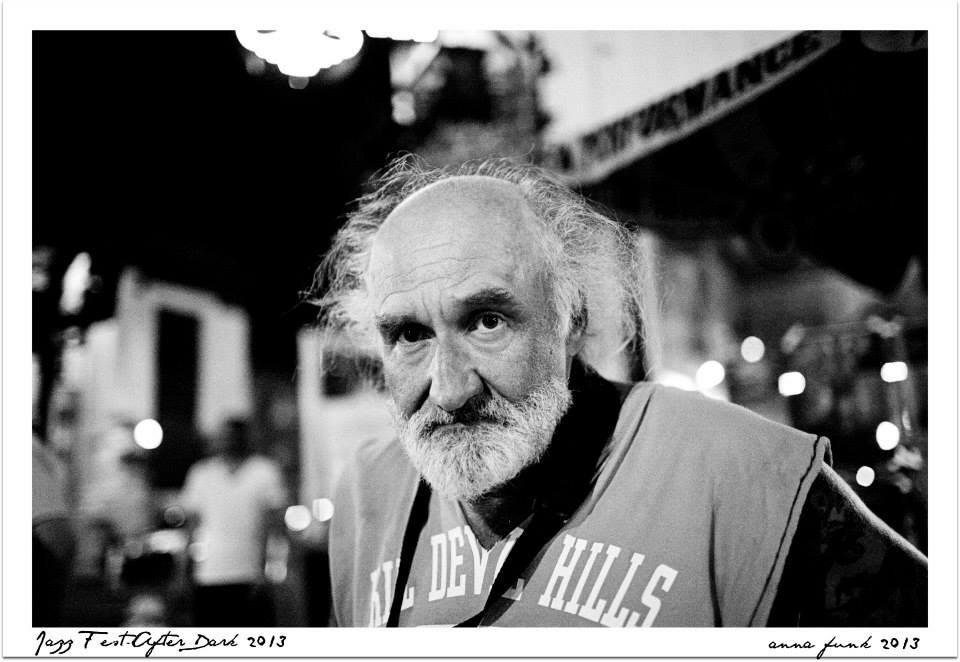 |
|
A couple of addenda: I should also mention that as I was working through all this stuff from Jacksonville, I came across a link to Kasper Collin’s My Name Is Albert Ayler on a Chinese site - whether it will still be there when you read this, I can’t say. * Some Ayler Fans 1. Michelangelo Antonioni Mentioned in an article about Herbie Hancock (Billboard, May 1st, 1999), here’s a ‘blow-up’ of the relevant section (click it for the rest of the article). |
||||||||||||||
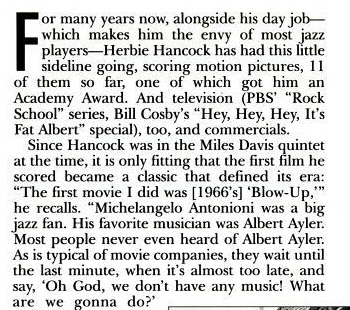 |
||||||||||||||
|
2. Keiji Haino “Keiji Haino pays tribute to Albert Ayler en route to NYC. Photo courtesy of Issue Project Room. Keiji Haino born May 3, 1952 in Chiba, Japan, and currently residing in Tokyo, is a Japanese musician and singer-songwriter whose work has included rock, free improvisation, noise music, percussion, psychedelic music, minimalism and drone music. He has been active since the 1970s and continues to record regularly and in new styles:” |
||||||||||||||
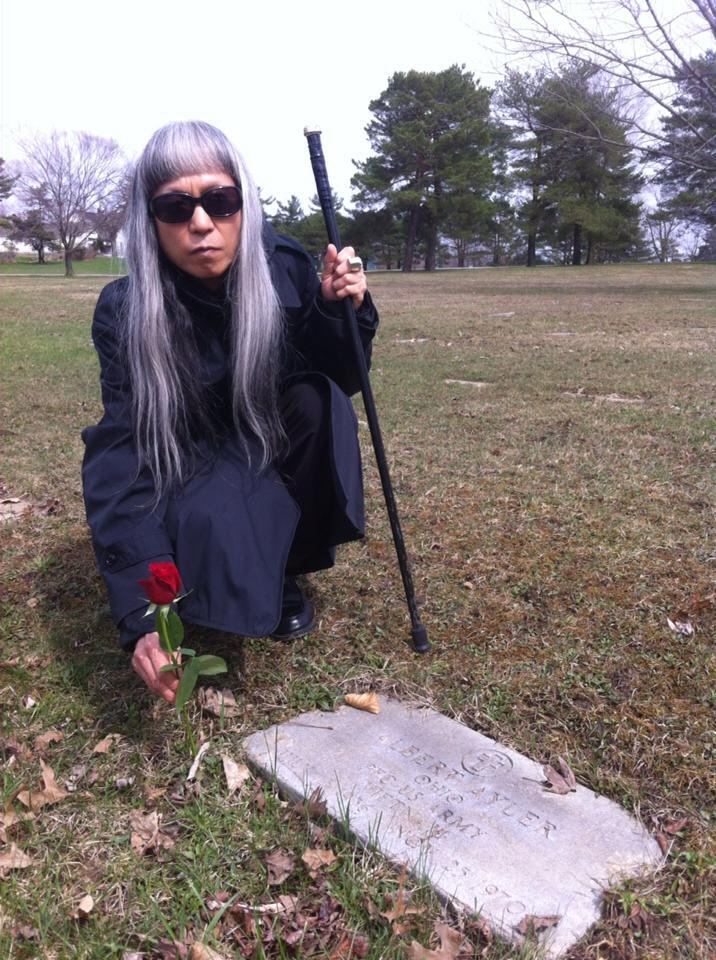 |
||||||||||||||
|
3. berry van boekel Yair frequently sends me Ayler artworks which I diligently place in the Archives on the Images pages (1 and 2), but this month’s batch included a couple from berry van boekel (not sure if the lower-case initials are obligatory, but, artists, right?). I liked the one below and it’s also worth taking a look at mr. van boekel’s blog, ‘The Top 100’ which gives some information about his interest in Ayler, and if you track back to the blog’s home page you’ll find more pictures, including a nice one of Sonny Rolllins. |
||||||||||||||
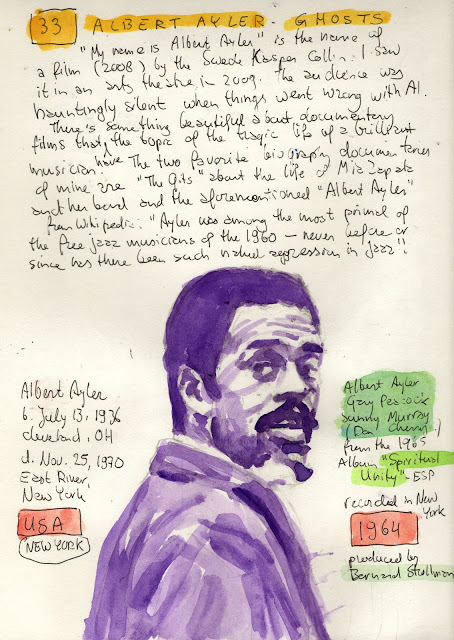 |
||||||||||||||
|
4. Todd Harrold My sole contribution this month, but I reckon it’s the oddest. I’ve had Todd Harrold’s CD, Mr. Whatever listed on the Tributes page for a while, since it includes the track: ‘Albert Ayler Sail Away’. Anyway, I came across it on youtube, and here it is:
|
||||||||||||||
|
“Trane was the father, Pharoah was the son, I was the Holy Ghost” Although this runs it close in the oddness stakes. Yair found this on the tumblr site and I have to take his word for it since my computer can’t deal with tumblr and always locks up when I go on it - time to upgrade methinks. Anyway, if you want to wander the streets displaying the famous quote on your chest, now, presumably, you can. |
||||||||||||||
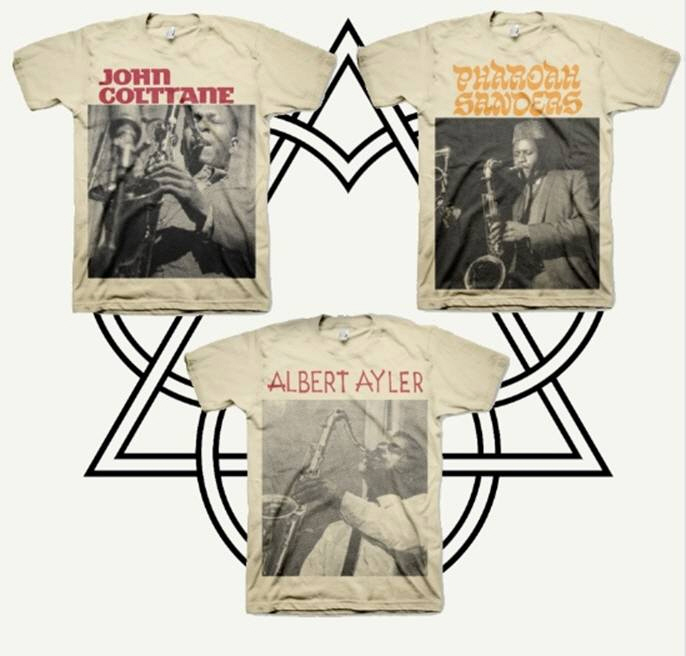 |
||||||||||||||
|
And while we’re on the subject of odd ... again, I’ve had the album, Ghosts. by Niù Abdominaux Dangereux listed on the Versions page for a while, but without a picture of the cover. Yair provided one, but rather than just add it there, I thought it deserved to be revealed here in its full glory. More pictures and information available here. |
||||||||||||||
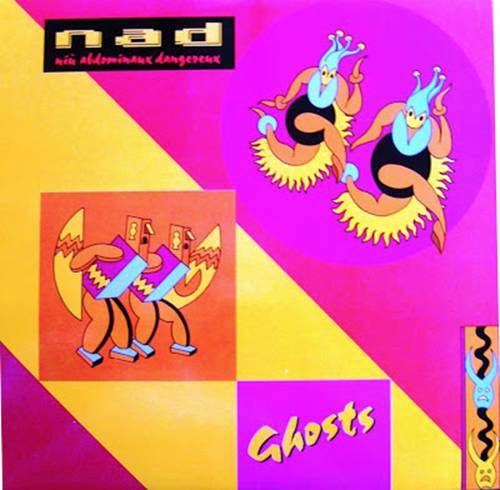 |
||||||||||||||
|
Slugs’ Kees Hazevoet emailed this flyer from Slugs’ asking if I’d got it on the site. I presumed I had, since it was one of the things in the Holy Ghost box, but turned out I hadn’t - only a couple of miniaturised versions. So, here it is in its full glory. It’s not from the album date or the iconic photograph - those were from May 1966 - this is from September/October, 1967. |
||||||||||||||
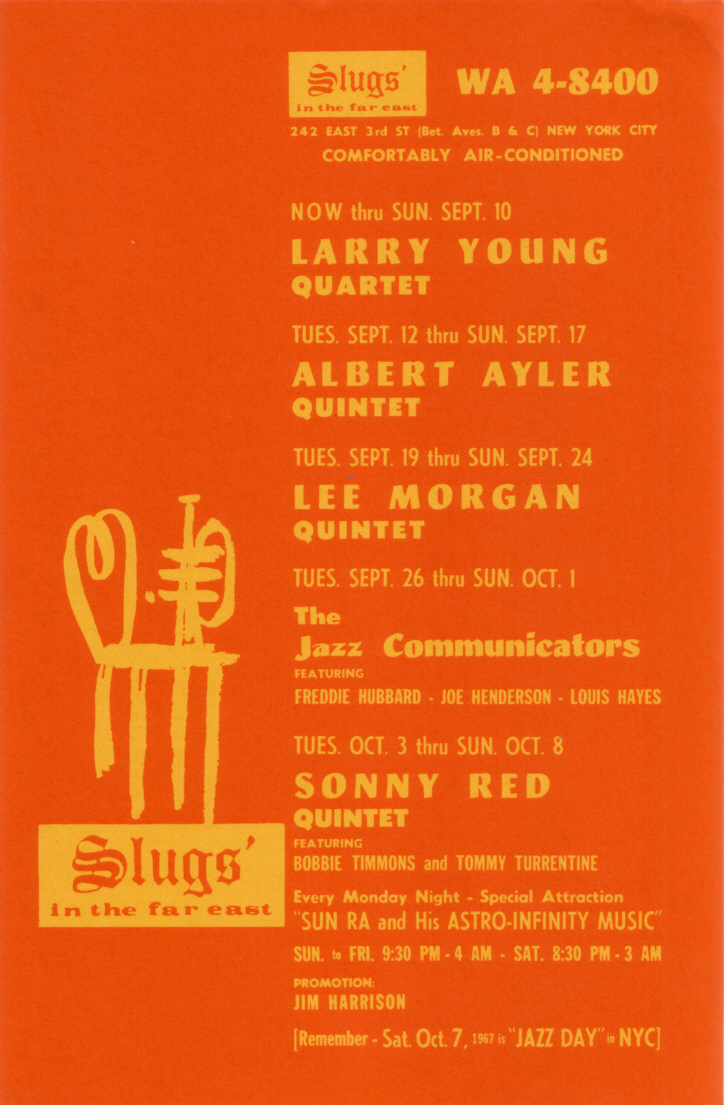 |
||||||||||||||
|
And finally ... Richard Leigh has posted a comment on the guestbook about last month’s piece concerning David Murray and his resemblance (or not) to Albert Ayler. Check it out, way down at the bottom of this page. *** News from 2004 (January - June) 2004 (July - December) 2005 (January - May) 2005 (June - December) 2010 (January - June) 2010 (July - December) 2011 (January - May) 2011 (June - September) 2011 (October - December) 2012 (January - May) 2012 (June - December) 2013 (July - September) 2013 (October - December) 2014 (January - June) 2014 (July - December) 2015 (January - May) 2015 (June - August) 2015 (September - December) 2016 (January - March) 2016 (April - June) 2016 (July - August) 2016 (September - December) 2017 (January - May) 2017 (June - September) 2017 (October - December) 2018 (January - May) 2018 (June - September) 2018 (October - December) 2019 (January - May) 2019 (June - September) 2019 (October - December) 2020 (January - April) 2020 (May - August) 2020 (September - December) 2021 (January - March) 2021 (April - July) 2021 (August - December) 2022 (January - April) 2022 (May - August) 2022 (September - December) 2023 (January - March) 2023 (April - June) 2023 (July - September) 2023 (October - December) 2024 (January - March) 2024 (April - June) 2024 (July - September) 2024 (October - December) 2025 (January - March)
|
||||||||||||||
|
Home Biography Discography The Music Archives Links What’s New Site Search
|
||||||||||||||
